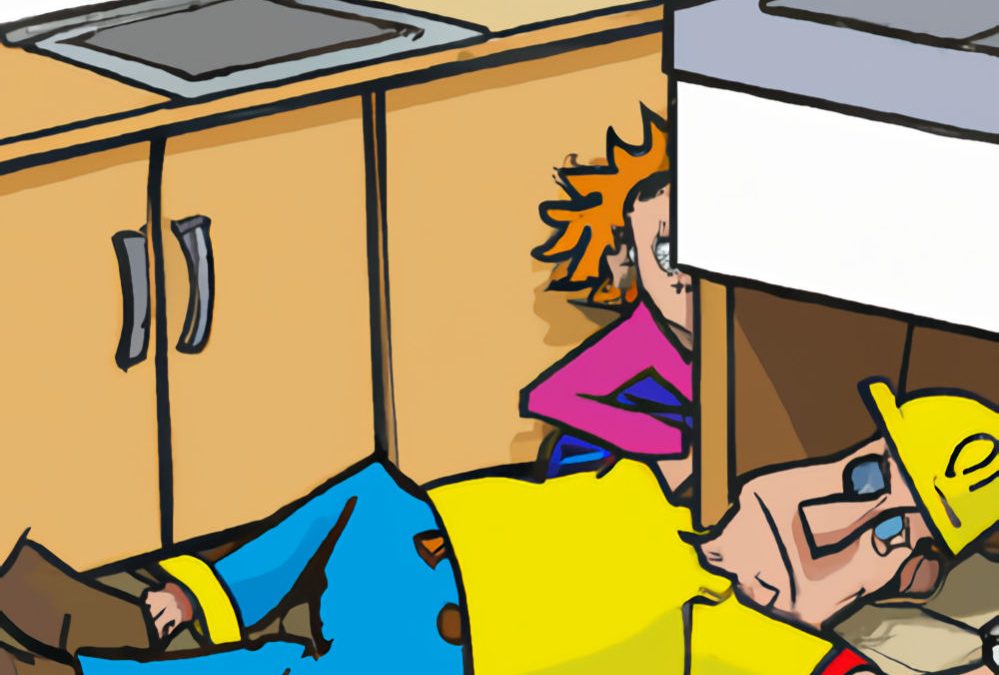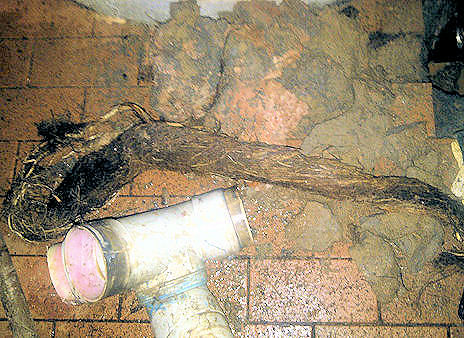
Blocked Drain Solutions: Evolving CCTV Drain Camera Technology
Pioneering Advanced CCTV Drain Camera Inspections on the Gold Coast
At Whywait Plumbing, we embraced the revolutionary technology of CCTV drain camera pipe inspections in 1994, transforming how we addressed plumbing and drainage challenges.
Gone are the days of guesswork and disruptive procedures. Today, our skilled team uses state-of-the-art CCTV technology to deliver crystal-clear insights into the intricate world of pipes and drainage systems beneath your feet.
Whywait Plumbing has been a leader in introducing advanced technologies in the plumbing industry since 1994, becoming the first Gold Coast company to own and operate CCTV pipe inspection cameras. This pioneering step marked a new era in plumbing diagnostics and set a precedent for ongoing innovation and excellence.
The Evolution of Plumbing Diagnostics
Our early adoption of CCTV technology revolutionised our plumbing diagnostics for blocked drains. Our first black and white CCTV drain camera in 1994 provided our technicians unprecedented insight into pipes and drainage systems through what were then state-of-the-art cameras and software.
Introduction to CCTV Drain Camera Pipe Inspections
CCTV pipe inspections represent a significant technological advancement in plumbing, offering a non-destructive, efficient way to diagnose and address issues within drainage systems. This method employs specialised cameras, providing a clear, real-time view of the inner workings of pipes and drainage systems, thus revolutionising the maintenance and troubleshooting of drains and plumbing systems.
The Technology Behind CCTV Inspections
Utilising advanced camera technology, software, and location trackers, CCTV inspections provide detailed, data-rich visuals and videos of the interior of pipes. This equipment is connected to a computer, feeding real-time data and images to the operator. The technology varies in capabilities, with some cameras offering 360° 3D views or laser profiling, making it suitable for a range of inspection environments.
The Tech Edge: Advanced CCTV Inspections
Today Whywait Plumbing’s advanced CCTV pipe inspections use cutting-edge camera technology to offer detailed, data-rich visuals, ensuring comprehensive and targeted solutions for various drainage and plumbing systems. Long gone are the grainy black and white cameras.
Versatile Solutions for Every Plumbing Challenge
CCTV drain camera inspections are versatile and applicable to various plumbing systems, including bathroom showers, floor waste, toilets, sewer and stormwater pipes. They can navigate through small pipes 20mm in diameter in confined spaces and provide insights into larger drainage systems up to 300mm, ensuring a comprehensive solution for blockages and other issues.
We’ve invested in the most advanced camera technology, software, and tracking locators to ensure our CCTV drain camera inspections are second to none. These sophisticated tools allow our technicians to perform comprehensive inspections across various plumbing situations, from residential bathroom sinks to complex sewer systems.
We pride ourselves on precision and efficiency, hallmarks of Whywait Plumbing’s service ethos.
Precision Diagnostics for Accurate Solutions
One of the most significant advantages of CCTV inspections is their precision. The drain cameras now accurately display the distance they have travelled down the drain and the location sondes built into the camera enables us to accurately locate their position at all times.
They provide high-quality visuals, allowing technicians to diagnose a range of issues like blockages, cracks, leaks, and structural damage. This reduces the need for trial-and-error methods, streamlining the diagnostic process and formulating effective solutions.
Addressing Stormwater Drain Challenges
Stormwater drains often face blockages due to debris and sediment accumulation, particularly after heavy rains and floods.
Whywait Plumbing’s CCTV drain camera inspections are crucial in maintaining these drains, providing clear interior views for timely cleaning and preventive measures, and ensuring they remain free-flowing and functional.
Spotting the Blockage: The Advantages
CCTV inspections offer real-time visuals, making them a game-changer in detecting and understanding blockages. This comprehensive exploration covers everything from small pipes to larger stormwater drains, ensuring precision in identification and facilitating efficient solutions.
Benefits of Annual Drain Checks
Regular CCTV drain checks play a vital role in proactive plumbing maintenance. By annually inspecting plumbing systems, we can ensure smoother day-to-day functioning and extend their lifespan, saving homeowners and businesses from costly replacements and unexpected plumbing emergencies.
Proactive Maintenance: A Step Ahead with Whywait
Proactivity is at the heart of our philosophy at Whywait Plumbing.
Our CCTV inspections are not just about fixing current problems; they’re about foreseeing future ones. We identify early signs of potential issues, allowing us to take measures to prevent costly repairs later.
This approach ensures the longevity and sustainability of your drainage and plumbing systems.
Economic and Environmental Advantages
Our use of non-invasive CCTV drain camera inspections offers notable economic benefits.
They eliminate the need for costly and time-consuming excavation, reducing labour costs and expediting inspection turnaround times. Swiftly pinpointing issues enables efficient and cost-effective solutions, saving property owners and businesses money.
CCTV pipe inspections are environmentally friendly. Traditional methods, like excavation, can be disruptive and harmful to the surrounding area. CCTV inspections, being non-invasive, minimise environmental impact and maintain the integrity of the plumbing system.
Proactive Maintenance and Long-Term Sustainability
Our advanced CCTV technology helps identify potential issues early, contributing to the long-term sustainability of plumbing systems and preventing unexpected repairs.
These inspections are crucial in proactive maintenance, identifying potential problems like corrosion, pipe deterioration, or root ingress. This approach contributes to the long-term sustainability of the drainage infrastructure, preventing unexpected and costly repairs.
Documentation for Informed Decision Making
CCTV inspections provide valuable documentation of the drainage system’s condition over time. The recorded images and videos are a historical record, aiding plumbing professionals, property owners, and managers in making informed decisions about maintenance schedules and potential upgrades.
Whywait Plumbing – A Legacy of Innovation and Customer Satisfaction
Whywait Plumbing’s introduction of CCTV pipe inspection technology in 1994 has established us as pioneers in the field, reinforcing our commitment to advanced, efficient, and customer-focused plumbing solutions.
Our legacy of innovation continues to guide our efforts in offering the best services to our clients, ensuring peace of mind and satisfaction with every job.
In summary, CCTV drain camera pipe inspections offer a myriad of benefits in the plumbing industry.
From providing a clear view of pipe conditions to enabling targeted repairs and proactive maintenance, these inspections represent a significant leap forward in plumbing technology.
They offer a cost-effective, safe, and environmentally friendly solution, ensuring the long-term health and efficiency of plumbing and drainage systems. By reducing uncertainty and costs, this technology not only addresses present concerns but also secures the future of plumbing infrastructure, offering peace of mind to homeowners and businesses alike.













